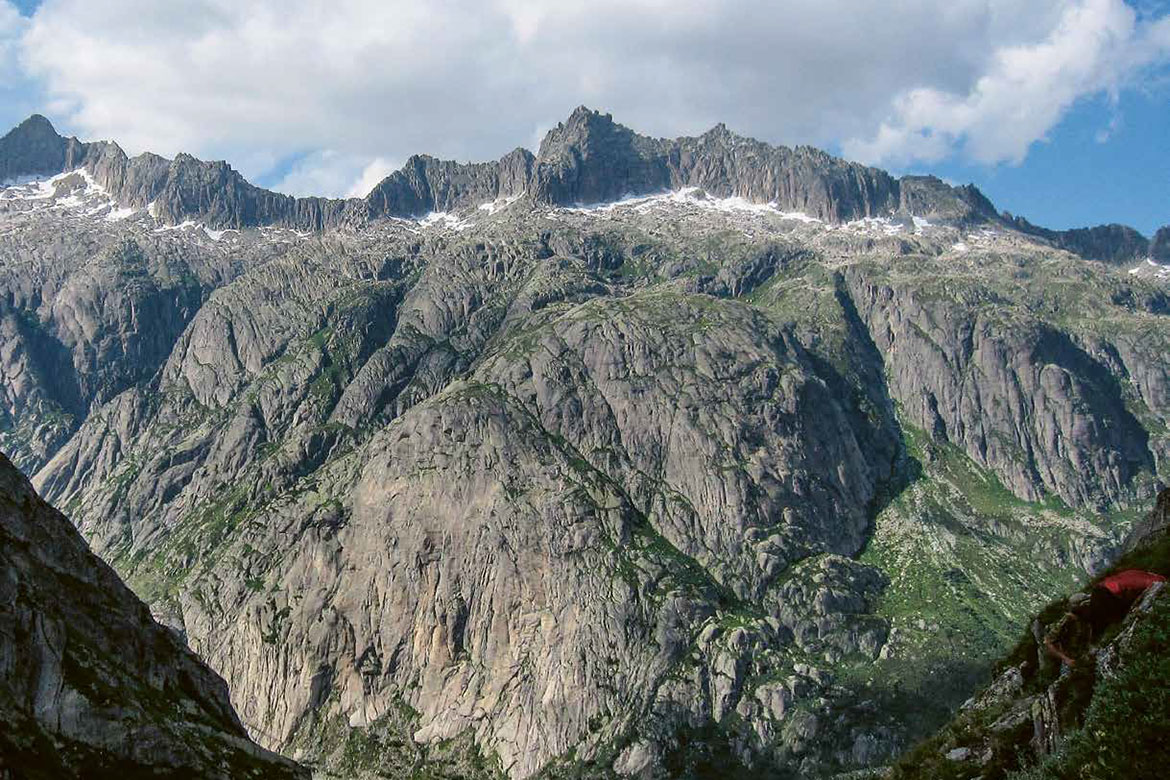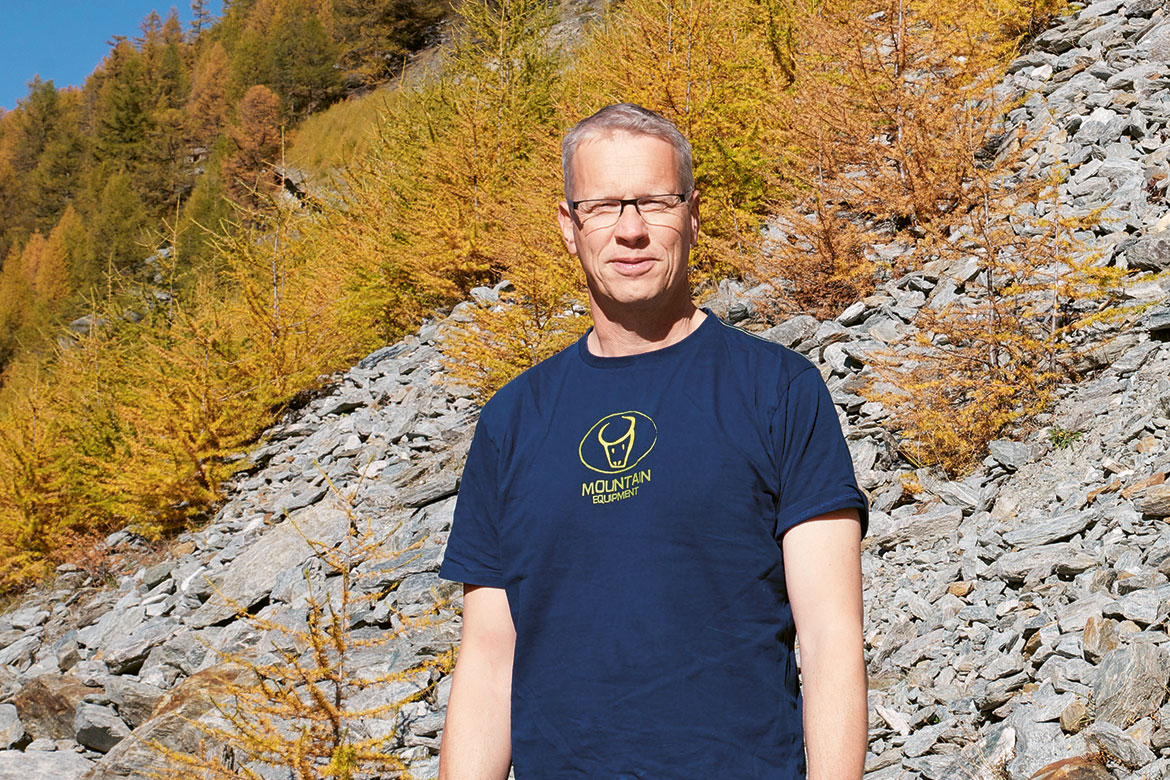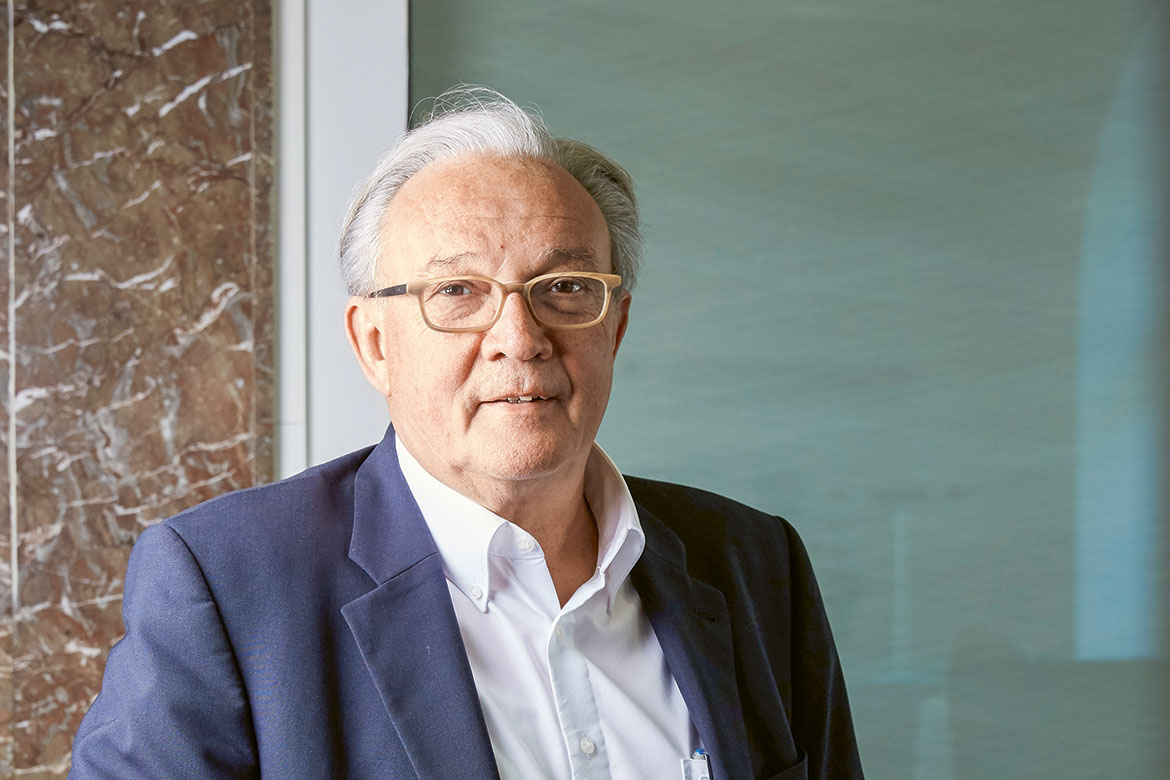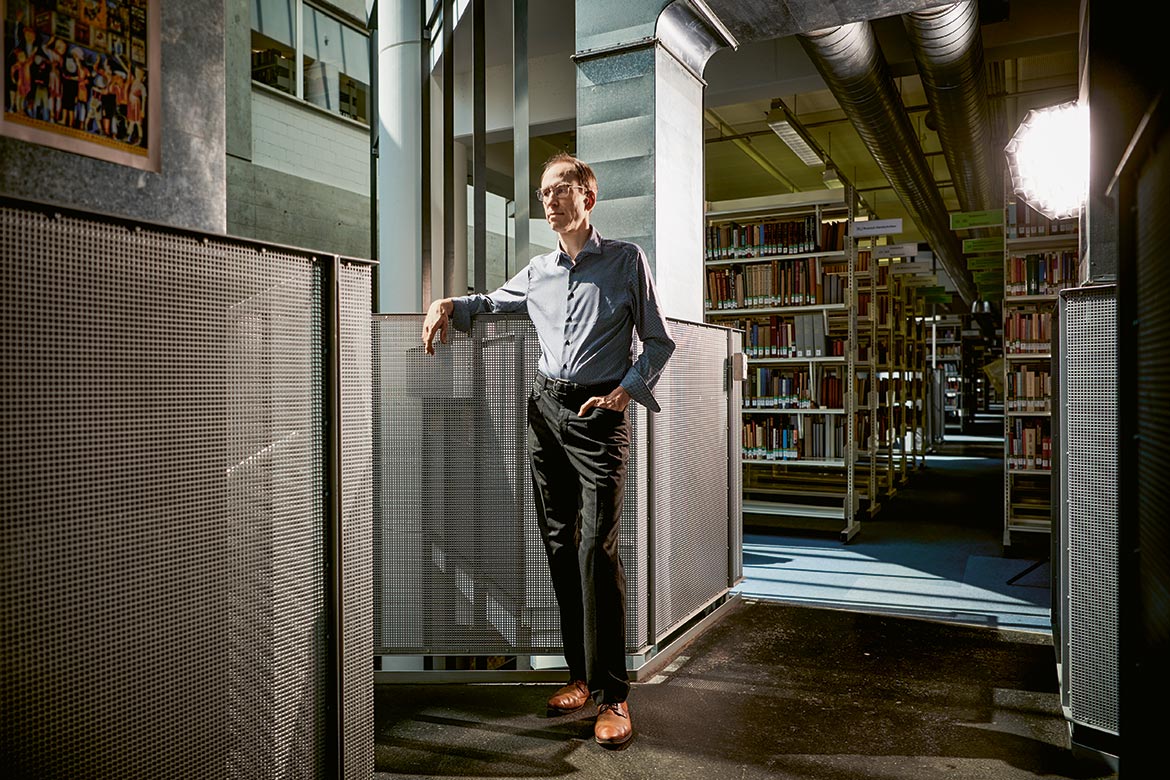“Learning to read the mountains”
The geologist Marco Herwegh is using new methods and computer models to investigate the millions of years of history of the Aarmassif. By examining the mountains from the inside, he has gained new insights into both natural hazards and new sources of energy.

Steep valley walls and worn-down rock faces: the craggy, furrowed Grünbergkette in the Grimsel Massif is the result of 300 million years of history. | Photos: Marco Herwegh. Portrait: Fritz Schlunegger
“We were able to travel for miles into the mountain through access tunnels, and saw small cracks and crevices in the tunnel walls from which water was dripping. We had a relatively clear task before us: we had to map the structure of an alcove roughly ten cubic metres in size at Nagra’s Grimsel rock laboratory. On our journey there, we only had a vague idea of what exactly awaited us. I had no way of knowing that a small alcove deep inside the Aarmassif would lead me to new explanations for the origins of the whole massif. Today, we can link our knowledge acquired in the depths of the mountain with that of the natural hazards that occur close to the surface, and even with new findings about geothermal energy.
A ‘rubbish heap’ 300 million years in the making
“I needed twelve years of intensive collaborative work with my team in order to be able more or less to ‘read’ the mountains in the upper Haslital. These seemingly compact, giant rock formations were formed some 300 million years ago in the middle of the Earth’s crust. It was only about 20 million years ago that the Alps began to form, and the Aarmassif rose up because of increasing pressure and heat. The structures of today’s massif were preconditioned tectonically back then, deep in the Earth, and were permeated with a dense network of malleable fault zones. Much of what we see today in the craggy rock faces was formed far below ground. But the behaviour of this malleability changed during its journey to the cool surface of the Earth. Granite that had formerly been hot and soft now became hard, and the puzzles it poses become more complicated. What remains is really only a giant ‘rubbish heap’ of blocks and plates.
Links with natural hazards
“All these factors have their biggest impact where the mountain is at its weakest: at fracture points and in crevasses. That is why we have been hunting for them with different methods. In the Grimsel Massif, we have found more than 30,000 lineaments. These fissures can be seen on the surface, but their sheer number means you can barely comprehend them. So we have looked for their traces on aerial photos, checked them on the spot, and calculated high-resolution models of them using computers. These don’t just show the surface, but predict fractures that penetrate into the interior of the Earth. This information enables us to understand now why the mountains are up to four thousand metres high on the northern edge of the Aarmassif. Glaciers and water have played their part over the past millennia, ensuring that these mountain bastions rise up even more ruggedly into the skies today. The melting away of the glaciers has exposed the rough rock of the extremely steep valley flanks. At the same time, water and large temperature differences wore down the rock even more. These are ideal conditions for gravity to play its part, and can accelerate the onset of rock falls and landslides. A third natural hazard is mudslides, which thunder into the valley after strong rainfalls, and are also caused by the disappearance of the permafrost.
“It’s very important to me that our research is able to provide a precise basis for the work of geological engineers. This helps them to better protect the population and the infrastructure in the mountains. It is fascinating how our fundamental research can find concrete applications. Modelling the crevices and the fissures also allows us to carry out far more precise calculations on subterranean water flows. It’s not by chance that the fissured region of the Grimsel is where we find Europe’s highest-lying hot spring. Now we have to set about how to use this energy in the future. But for this, we first had to learn to read this mountain properly”.
Recorded by This Rutishauser
‘News from the Grimsel geothermal area’, 1 December 2017, Berne

Portrait: Fritz Schlunegger
Marco Herwegh is a professor of structural geology at the University of Bern. He is the President of the Bern Society for Research into the Natural Sciences and has conducted research at the Massachusetts Institute of Technology in Boston and at the University of Western Australia. Today, Herwegh also works with his group at the Swiss Tectonic Arena Sardona, a UNESCO World Heritage site.




